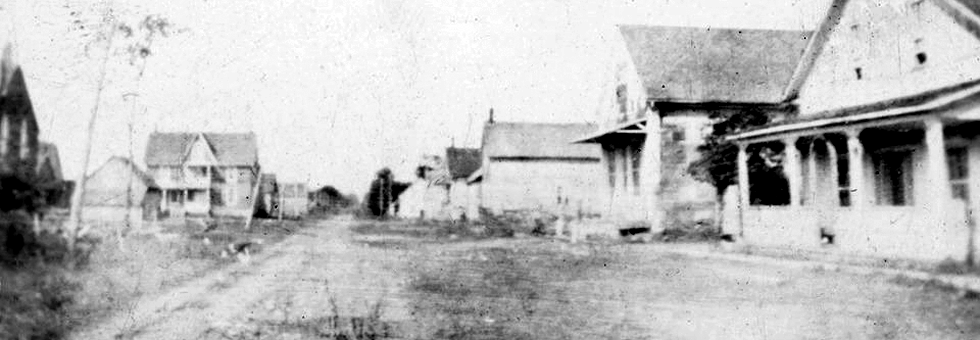A month or two ago, I mentioned that Jim Fletcher, a loyal reader from Kanata, dropped by. Jim was raised in Dunvegan in the 1940s and 50s… on a farm across the road from the one that Terry and I eventually bought. As we stood in the driveway, Jim’s gaze wandered to his former home. He was obviously reliving the past, so I offered him a penny for his thoughts. Turns out that the early summer weather we were enjoying that day had dredged up memories of haying season.
Jim went on to describe what making hay looked like when he was a young teenager, back in the time of transition between animal and mechanical horsepower.
But before he began, he remarked on what had happened to the fields of his youth. Today, the property to the north of us is hidden by thick curtain of trees. Some would see today’s growth as virgin forest, but for Jim it was simply scrub brush, junk, that had been allowed to choke the open fields of his youth, making a mockery of the back-breaking work the original homesteaders had invested to clear the land with axe and oxen.
Jim remembers being responsible for cutting and raking the hay from age 14, using a horse-drawn mower. “It definitely took two horses to pull the mower,” Jim told me. And he’d have to stop and rest them every once in a while. “Like in that big field across from you,” Jim went on. “I’d make one round on the outside and maybe rest them twice. Of course, eventually I could make a complete round without stopping to rest.”
At noon, Jim would unhitch the horses, lead them to water and a shady spot, and grab some lunch for himself. Jim explained that the team of horses was good for a five to six-hour day and that the field that had once been across from our place would take a couple of days. “It was hard work. Nothing’s happening if the mower’s not moving,” Jim said.
Once the hay was cut, it was left to dry in the field, which took time. Today’s modern mower/conditioners crush the grasses to speed the drying process. But in those days, it was all on Mother Nature. Assuming the weather cooperated, Jim would then use a horse-drawn rake — “…one horse was enough to pull the rake,” Jim assured me — to make windrows and leave the hay to dry some more.
“When dry,” Jim concluded, “the hay was forked on to a horse-drawn wagon fitted with a hay rack.” When full, the load was driven to the barn where it was unloaded by hand… under a hot tin roof.
GIAG hits town, twice
It never ceases to amaze me what a gem Dunvegan’s little museum is. With events like the upcoming Harvest Fall Festival, venues for weddings and family reunions and “living history” programs for school children, there’s something for just about everyone. Even seniors.
Earlier this month, the Glengarry Pioneer Museum organized a special two-day event for members of the Glengarry Inter-Agency Group’s seniors program. Day one was designed for English clients and saw around 25 participants, many with walkers or wheelchairs. And day two attracted about 15 Francophone seniors.
Each ‘day away’ adventure began with a picnic lunch under the Williams Pavilion, organized by the GIAG volunteers. Then the museum staff played a ‘Guess the Artifact’ game to get everyone in a historical frame of mind. A museum staffer held up an object from the past — like a candle mould or a Victorian baby bottle — and took it around for the audience to examine. “Honestly, this activity works for all ages,” curator Jennifer Black told me. “Everyone gets involved and has a great time.” After this icebreaker, the groups set off on a tour of the one-room schoolhouse, the Star inn, the blacksmith shop and the other buildings in the collection.
When I asked Jennifer about the availability of this sort of activity for other organizations, her response was, ”We love having group tours when our schedule allows.” So if your association, club, society, league, guild, circle, union or consortium is looking for a unique outing, give the museum a ring at 613-527-5230.
Daughter fills us in
Last week, I mentioned the untimely departure (from the hamlet, not life) of Henri Clément who had been renovating the old brick house across from the DRA Hall. I’d been told suffered a stroke, was hospitalized, and then went to live in Williamstown. Well, thanks to a call from his daughter Jacqueline (Jackie), I’m now able to put a wee bit of flesh on those bones.
Henri is a very private chap, so I won’t go into a lot of detail, but Jackie was eternally grateful for the actions of Henri’s neighbours from across the road. She was also impressed by the care her father received at both the Hawkesbury General Hospital and the stroke rehabilitation clinic at the Glengarry Memorial Hospital in Alexandria.
As for Henri’s present condition, he is dealing with paralysis on his right hand side. However, Jackie says her dad (a former member of Canada’s armed forces) is a tough cookie and is back on his feet with the aid of a walker… and even just a cane, on his better days.
One takeaway from this story that Jackie and I discussed was that seniors who are living alone should invest in a medical alert system. There are over a dozen providers in Canada; prices start around $30 a month plus tax; and all offer a ‘fall detection’ feature. It’s small price to pay to provide family and friends with a lot of peace of mind.
-30-
